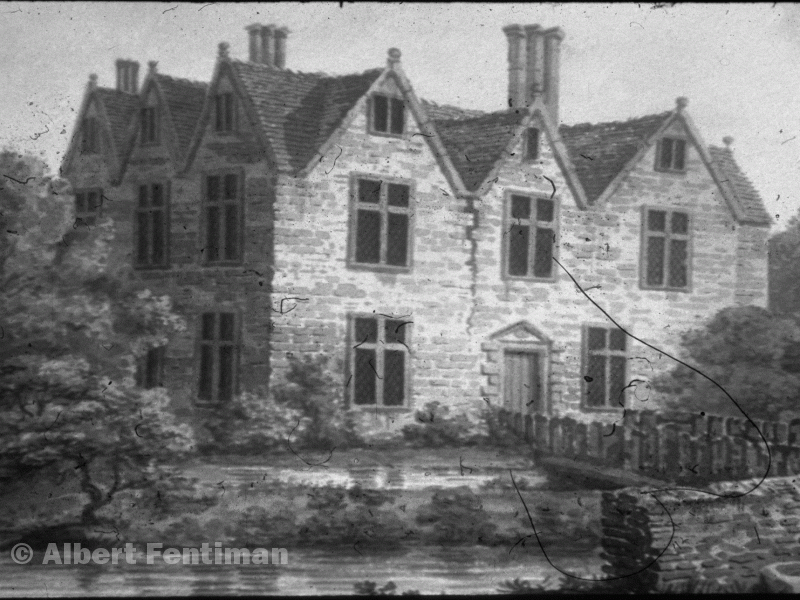The old boundary of Sutton, as recorded by the Enclosure Commissioner in 1824, followed Hurst Brook from the canal to Wishaw Lane.
Hurst Brook rises at the moat of Peddimore Hall - it is now a ditch cutting a straight line across a flat prairie, but for centuries it formed the boundary of a large oval field called the Lord’s Meadow. The twelve-acre meadow dates back to Saxon times, when the surrounding land lay uncultivated, and probably accounts for the ten acres of meadow recorded at Sutton in the Domesday Book of 1086. The meadow belonged to the Earl of Warwick, who owned the Chase of Sutton Coldfield - in 1433 twenty-three cartloads of hay were produced by the meadow, of which twenty cartloads were used for the lord's horses in the hunting season and three were for the Chase Rider. In 1480 there was less hunting, so only seven cartloads of hay were used by the manor, the rest being sold for 22 shillings; the aftermath (value of the grazing after the hay had been cut) was worth 2s 6d (12½p.) After 1528 the Lords Meadow belonged to the town of Sutton, and the Lords Meadow charity was established, whereby the value of the hay was given to poor widows for their maintenance. The meadow was maintained by the farmer of Hurst Green Farm, in return for the aftermath. Mr. Harris, the Enclosure Commissioner, awarded the Lords Meadow to a private owner in 1825, giving land at Hillwood to the Corporation instead, land which still belongs to the Sutton Coldfield Municipal Charities today.
Mr. Harris followed the boundary along the lane to Hurst Green. Hurst Green was possibly a small settlement founded in the twelfth century with a moated farmhouse The moat was 200 yards to the east of the present Hurst Green Farm and this may be where a long line of Hursts lived, from John Othehurst in 1403, Thomas, George and Henry Hurst who were Constables of Sutton in the sixteenth century, and at least three Henrys in the seventeenth, all yeomen farmers with about fifty acres of land.
The probate records of Henry Hurst the elder, who died in 1670, show that it was a mixed farm with cattle and sheep, where peas, oats, barley, wheat and blencorn ( a mixture of wheat and rye) were the crops grown. The rooms in the house are listed in the 1670 deed, and again in the records of Henry Hurst the younger who died in 1689. By 1689 there were some additional rooms, a cheesepress house and a cheese chamber, showing that dairy farming was becoming profitable on the rich meadow lands.
